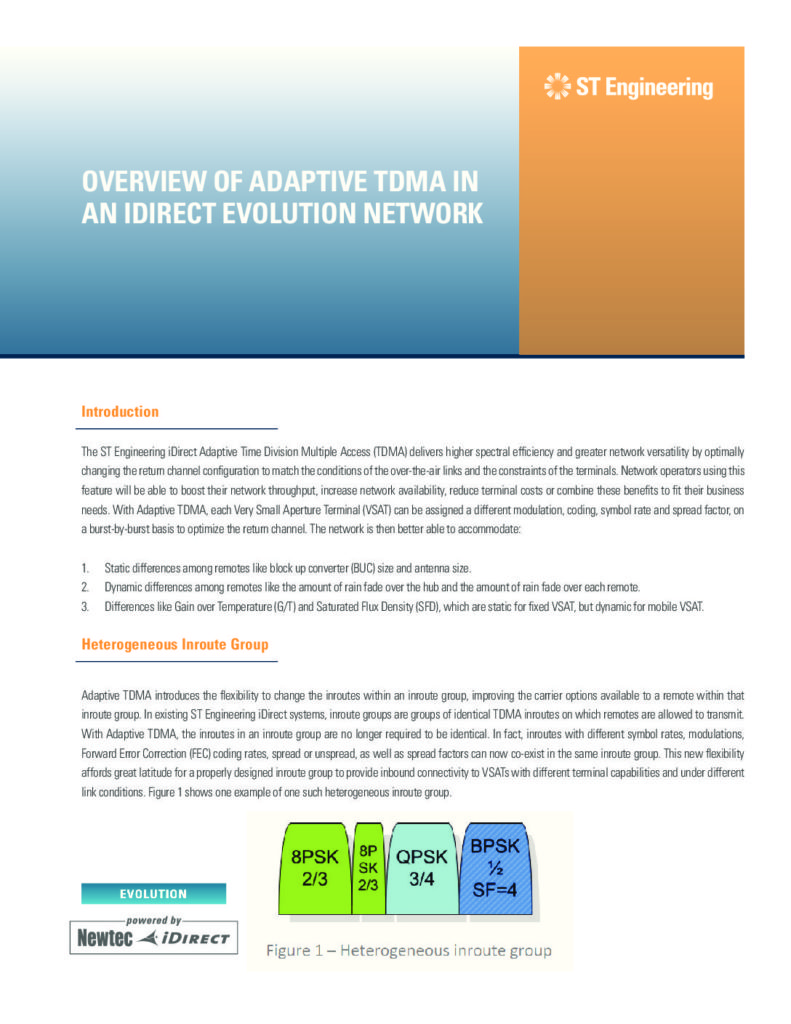Adaptive Time Division Multiple Access (TDMA) delivers higher spectral efficiency and greater network versatility by optimally changing the return channel configuration to match the conditions of the over-the-air links and the constraints of the terminals.
Adaptive TDMA

-
Network operators using this feature will be able to boost their network throughput, increase network availability, reduce terminal costs or combine these benefits to fit their business needs. With Adaptive TDMA, each Very Small Aperture Terminal (VSAT) can be assigned a different modulation, coding, symbol rate and spread factor, on a burst‐by‐burst basis to optimize the return channel. The network is then better able to accommodate:
- Static differences among remotes like block up converter (BUC) size and antenna size.
- Dynamic differences among remotes like the amount of rain fade over the hub and the amount of rain fade over each remote.
- Differences like Gain over Temperature (G/T) and Saturated Flux Density (SFD), which are static for fixed VSAT, but dynamic for mobile VSAT.
-
Benefits of Adaptive TDMA
- Adaptive TDMA enhances return channel performance and increases network availability under rain fade and link degradation.
- An inroute group can support carriers with different symbol rates, MODCODs and spread factors dynamically adjusting to changing uplink conditions based on each remote’s demand and the system’s QoS configuration.
- Service Providers have the flexibility to choose the business model that’s right for them.
- Increase throughput up to 40% for fixed VSAT with the same satellite bandwidth, and even more for mobile networks resulting in the ability to deliver higher data rates to end users
- Allows Service Providers to sell more bandwidth to customers using their existing satellite capacity, creating new revenue streams, or lower capacity costs while meeting existing customer Service Level Agreements (SLAs)
- Ability to deploy smaller terminals saving costs
- Leverage performance gains to provide customers with higher levels of availability without designing the entire link budget around worst–case conditions, ensuring greater protection against rain fade and adjust for spectrum degradation. This flexibility is especially important for maritime and aviation applications.
- Service providers can enhance their service differentiation, with throughput gains and enhanced availability, allowing them to fulfill SLAs with confidence.
- Adaptive TDMA is available on Evolution and Velocity platforms.
-
